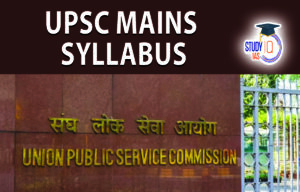Table of Contents
Introduction
You can start your answer by explaining e-governance.
- E-governance involves using digital technologies to improve government services and communication with citizens, enhancing efficiency, transparency, and accountability.
- E.g. India’s DigiLocker system allows digital access to important documents, reducing paperwork.
You should also explain about Interactive Service Model
- Interactive Service Model works on direct individual participation in governance processes, enhancing objectivity and transparency in decision-making through the use of ICT.
Routine Application of Digital Technology in E-Governance:
- Interaction with Citizens:
- MyGov Portal: This platform enables direct government-citizen communication, allowing public participation and input in governance.
- E-Filing of Taxes:
- Income Tax Portal: Streamlines tax return filing, improving efficiency and user-friendliness while reducing paperwork through automation.
- Digital Health Services:
- eSanjeevani:Offers telemedicine consultations, enhancing healthcare access in remote areas and showcasing the benefits of digital platforms in critical sectors.
- Real-Time Information Access:
- Public Financial Management System (PFMS): Ensures transparency with real-time information on fund allocation and usage for government schemes, aiding in monitoring and preventing misallocation.
Role of Interactive Service Model for Transparency and Accountability:
-
- Citizen Feedback:
- Swachh Bharat Mission App: Enables citizens to report unclean areas and give feedback on sanitation services, improving prompt issue resolution.
- Citizen Feedback:
- Participation:
-
- UMANG App: Integrates government services, including voting, into a single platform, boosting civic participation and streamlining access.
- Mechanisms for Citizens to Provide Information:
- NABARD’s Integrated Rural Development Programme (IRDP) Portal: Allows beneficiaries to track application status and provide feedback, ensuring transparency and accountability in service delivery.
- Systems for Lodging Complaints:
- Online Grievance Redressal Systems: These platforms enable citizens to file and track complaints, with systems like CPGRAMS ensuring efficient grievance resolution and enhancing governance accountability.
Challenges of Interactive Service Model:
-
- Digital Divide:
- Limited Rural Internet Access: TInteractive models are less effective due to poor internet infrastructure in rural areas, limiting access to e-governance services.
- Digital Divide:
- E.g. NSSO (National Sample Survey Office) data reveals a staggering disparity: only 24% of rural households have internet access, compared to 66% in cities.
-
- Low Digital Literacy:
- Older Populations Struggle: Older individuals and those with limited tech skills struggle with e-governance platforms, affecting their digital service engagement.
- Low Digital Literacy:
- E.g. 54% of the population aged 65–74 use the internet for any purpose, compared to 30% of those aged 75+.
- Data Privacy:
- Risks from Insufficient Data Protection: Interactive models involve significant data exchange, raising privacy and security concerns. Weak protection measures lead to breaches and misuse.
- E.g. A significant breach of Aadhaar data occurred in 2023, when a threat actor named “pwn0001” leaked the personal information of 815 million Indians on the dark web
- Bureaucratic Resistance:
- Hinders E-Governance Efficiency: Resistance from traditional bureaucratic structures hinder the implementation of e-governance initiatives, impacting their efficiency and effectiveness.
Conclusion:
The interactive service model of e-governance improves transparency and accountability but faces challenges like the digital divide and data privacy. Addressing these through better infrastructure, literacy, and data protection can enhance e-governance effectiveness.
| Related Post | |
| UPSC Mains GS 1 Question Paper 2024 | UPSC Mains GS 1 Analysis 2024 |
| UPSC Mains Essay Question Paper 2024 | UPSC Mains Essay Analysis 2024 |
| UPSC Mains GS 2 Question Paper 2024 | |

 NCERT Books for UPSC Preparation, Check ...
NCERT Books for UPSC Preparation, Check ...
 UPSC Syllabus 2025, Check UPSC CSE Sylla...
UPSC Syllabus 2025, Check UPSC CSE Sylla...
 UPSC Mains Syllabus 2025, Optional Sylla...
UPSC Mains Syllabus 2025, Optional Sylla...





















